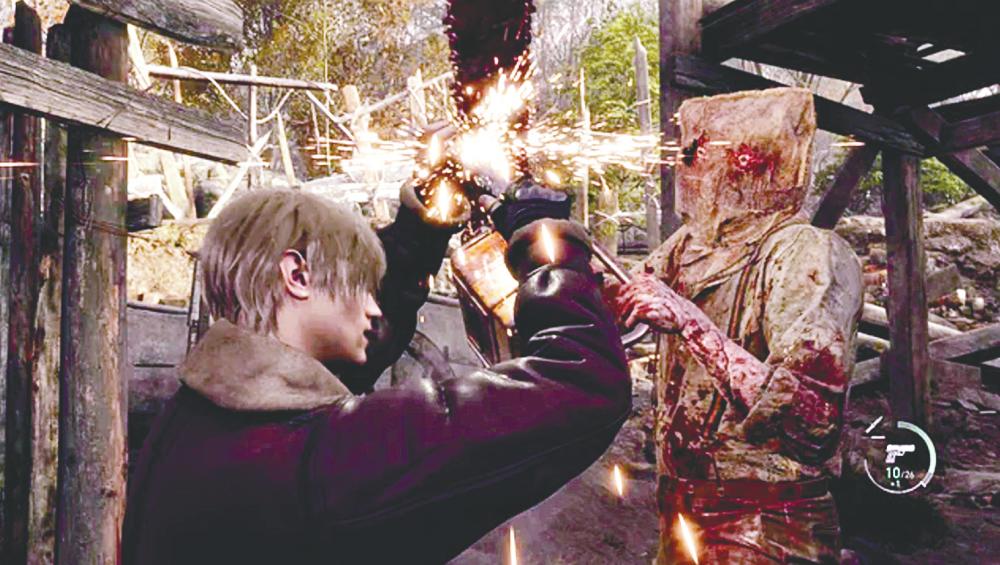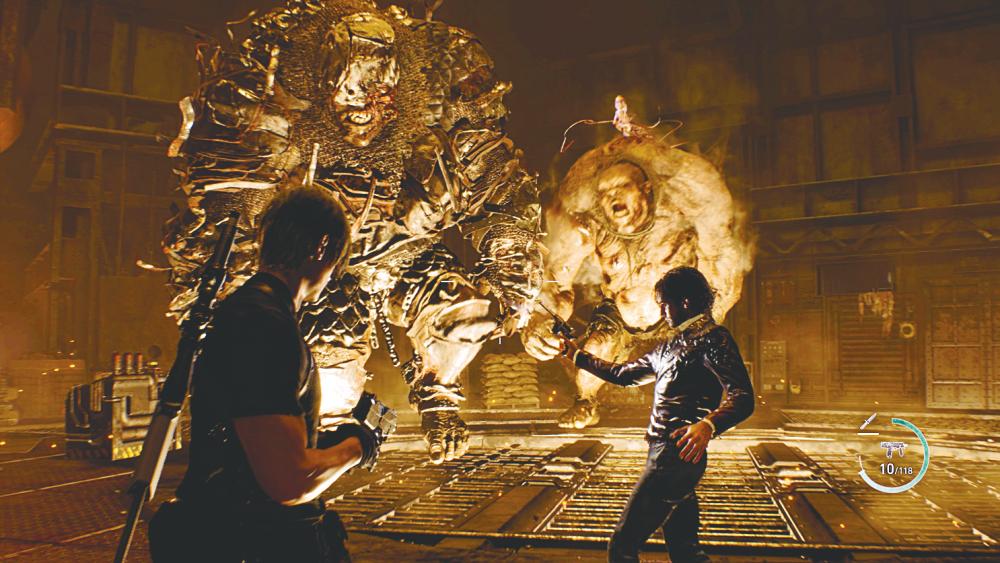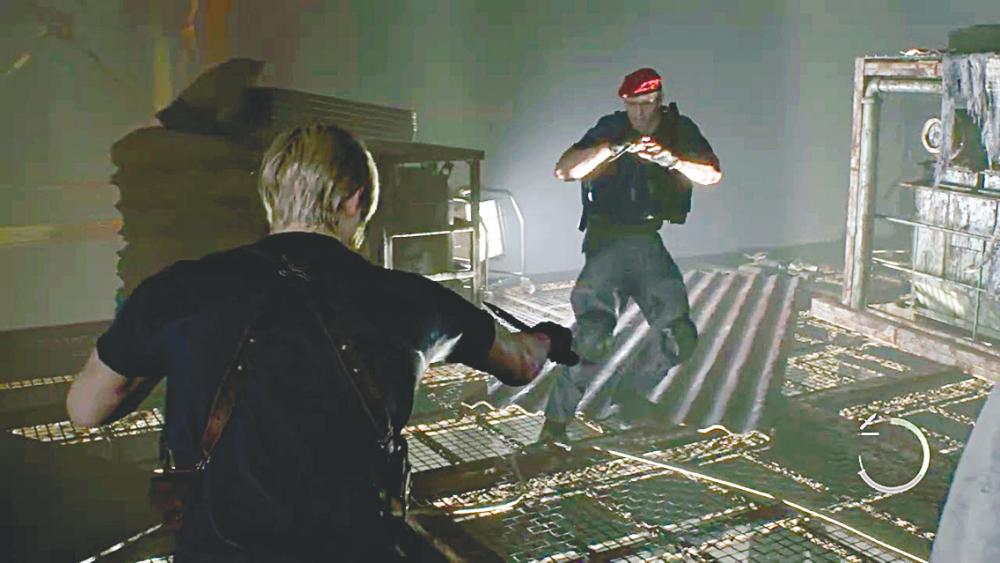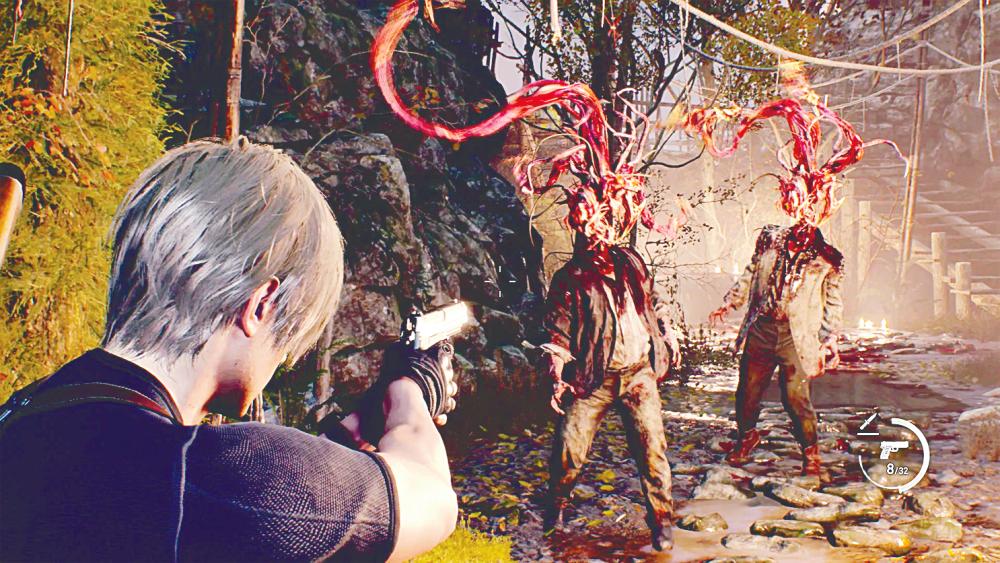THE original Resident Evil 4 was released in 2005 on the GameCube, and then the PlayStation 2 in the same year. During the 18 years since then, the game has remained in the upper echelons of the PS2’s rich, expansive library of games.
An instant classic that not only changed the face of action games at the time, the game also departed from the status quo set by previous games in the franchise, particularly due to the over-the-shoulder camera viewpoint, which was adapted by all subsequent action games and RE games.
In line with Capcom’s business model of remaking classic games for modern consoles and gaming tastes, starting with Resident Evil 2 in 2019, the latest Resident Evil 4 remake once again does the impossible.
A tourist trap
After surviving the events of RE2, special agent Leon S. Kennedy is sent by the American government to an unnamed European village to rescue Ashley Graham, the daughter of the U.S. President who has been kidnapped for unknown purposes.
Unbeknownst to Leon, the villagers have been infected by the Las Plagas parasite, and are under the control of the Los Illuminados cult. They are different from the usual zombies due to their retained intelligence.
Leon’s mission will take him across decrepit villages, caves, a castle, and an island, with each populated by hordes of these infected who come in all shapes, sizes and colours.

Harder than ever
Make no mistake; this game is a remake, in every aspect of the word.
Though it retains the core story of the original game, with some additions, RE4R has been rebuilt from the ground up.
On top of the obvious modernised graphics, the large portions of the various locations players will traverse have been changed, along with how each are navigated.
Certain events also do not play out the way they did in the original.
Players will probably feel the difference in the iconic large-scale fight in the game’s first hour; RE4R’s difficulty is nothing to scoff at.

Even on the Normal difficulty setting, the enemies will swarm players, and there are plenty of ways Leon can die before the game ends.
The enemy AI has been updated to not give any breathing room. Fights are frantic, juggling acts between resource, ammunition and healing item management and killing cultists, all while avoiding the mini-bosses with one-hit kill moves and navigating labyrinthine areas.
To make things more interesting, there are new enemies, such as the larger-than-average men walking around wearing the decapitated heads of cows.
Once Leon finds Ashley, the difficulty goes up a notch as players have to not only keep Leon alive against mobs of enemies, but also have to protect Ashley from being carried off by lone enemies into doors, which will trigger a “Game Over” screen.
By the time the players reach the opulent castle, which is the ‘second’ part of the game, with the enemies essentially multiplying in the tenfold, the difficulty spike is so huge, casual gamers might end up quitting the game.

Evening the odds
Though RE4R was intentionally made more difficult than the original, the developers have revamped the gameplay with mechanics and tools to help players, by making their mission slightly easier.
The first is Leon’s knife. In the original, the side weapon was largely only used for slashing enemies, usually to conserve bullets, with unlimited use.
In RE4R, his knife (and regular, weaker knives) can be used to parry attacks (parrying chainsaws, for instance, completely breaks the knife), deflect certain thrown weapons, be used in emergencies to stab enemies in the head to escape, and used for the regular slashing.
The knife is also crucial for the new sneaking mechanic; in this game, Leon can crouch and sneak up on enemies.
To somewhat limit the knife usage, knives have a durability gauge; Leon’s default knife be upgraded to last longer, and be fixed if completely broken.

Though the inventory management remains the same, in the form of attache cases in which Leon miraculously carries an entire armory of weapons, RE4R shakes things up by having different ‘styles’ of cases that provide individual perks, along with attachable charms.
The styles and charms can alter gameplay and combat significantly; such as providing % bonus for knife damage, for instance.
Due to the much faster paced combat, players can now bind weapons to the D-pad for swapping quickly between different firearms depending on the situation.
In the original RE4, this could only be done by going into the inventory screen and manually selecting a different weapon.
Though RE4R departs the camp and humour of the original game, while shedding certain outdated mechanics (like the rampant Quick Time Events), these changes and updates in the remake is a step in the right direction.
Like the original RE4 serving as a blueprint for future action games in 2005, RE4R should serve as a blueprint for what future remakes should be.









